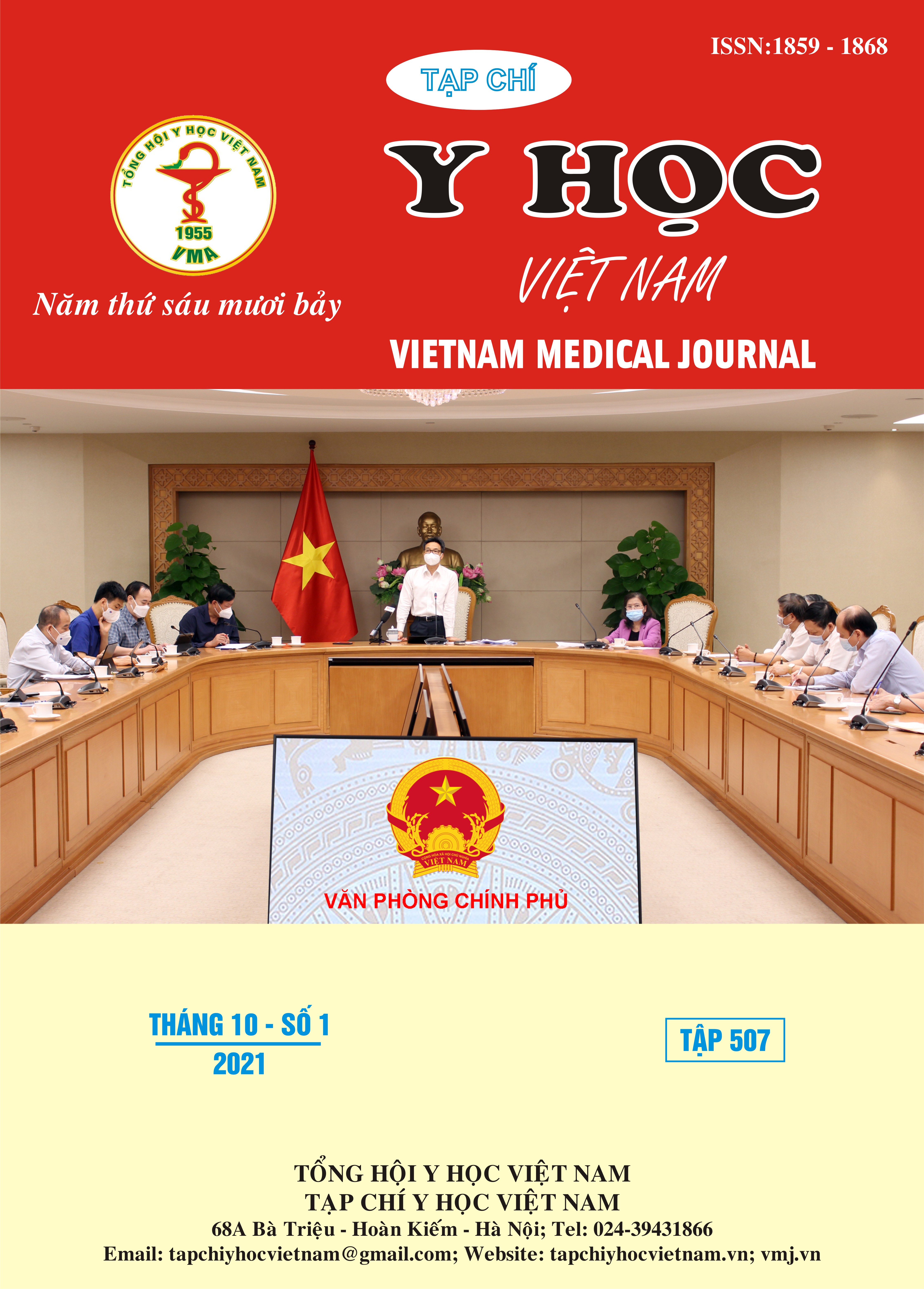ĐÁNH GIÁ KẾT QUẢ ĐIỀU TRỊ RỐI LOẠN NUỐT Ở NGƯỜI BỆNH NHỒI MÁU NÃO BẰNG CÁC BÀI TẬP NUỐT KẾT HỢP CHẤT LÀM ĐẶC THỨC ĂN
Nội dung chính của bài viết
Tóm tắt
Mục tiêu: Đánh giá kết quả điều trị rối loạn nuốt ở người bệnh nhồi máu não bằng các bài tập nuốt kết hợp chất làm đặc thức ăn. Đối tượng và phương pháp nghiên cứu: Nghiên cứu tiến cứu can thiệp so sánh trước sau được tiến hành trên 33 bệnh nhân đột quỵ não có rối loạn nuốt tại Bệnh viện Phục hồi chức năng Hà Nội. Kết quả: Nhóm tuổi mắc bệnh cao nhất từ 60 tuổi trở lên chiếm tỷ lệ 81,8%. Đa số bệnh nhân có mức độ rối loạn nuốt từ nhẹ đến trung bình, chiếm tỷ lệ 87,9%, chỉ có 12,2% bệnh nhân có mức độ rối loạn nuốt nặng. Theo dõi kết quả điều trị cho tỷ lệ bệnh nhân mắc rối loạn nuốt mức độ nặng giảm từ 12,1% xuống 9,1% sau 5 ngày, sau 10 ngày xuống 3% và sau 15 ngày điều trị không còn bệnh nhân có rối loạn nuốt mức độ nặng; tỷ lệ bệnh nhân không có rối loạn nuốt và rối loạn nuốt mức độ nhẹ tăng dần so với trước điều trị, sau 5 ngày, 10 ngày và 15 ngày điều trị lần lượt là từ 33,3% lên 60,6%, 81,8% và 90,9%. Tỷ lệ bệnh nhân có nguy cơ hít sặc mức độ nặng giảm từ 12,1% xuống 9,1% sau 5 ngày điều trị, sau 10 ngày còn 3% và không còn bệnh nhân có nguy cơ hít sặc mức độ nặng sau 15 ngày điều trị. Sau điều trị tất cả các triệu chứng cơ năng rối loạn nuốt đều cải thiện, trong đó triệu chứng ho sặc khi nuốt giảm nhiều nhất từ 87,9% xuống còn 9,1%. Kết luận: kết quả điều trị rối loạn nuốt ở bệnh nhân nhồi máu não bằng các bài tập nuốt kết hợp với chất làm đặc thức ăn cho thấy tình trạng bệnh nhân cải thiện đáng kể sau điều trị. Cần có nghiên cứu với cỡ mẫu lớn hơn để có thêm những thông tin về sự cải thiện.
Chi tiết bài viết
Từ khóa
Đột quỵ não, rối loạn nuốt, chất làm đặc thức ăn, bài tập nuốt
Tài liệu tham khảo
2. Nguyễn Thị Dung (2014), Bước đầu tìm hiểu rối loạn nuốt và nhu cầu can thiệp phục hồi chức năng nuốt ở bệnh nhân tai biến mạch máu não, Luận văn Bác sĩ nội trú, Đại học Y Hà Nội.
3. Bùi Thị Hồng Thúy (2019), Đánh giá hiệu quả điều trị rối loạn nuốt ở bệnh nhân nhồi máu não trên lều bằng các bài tập nuốt kết hợp liệu pháp phản hồi sinh học, Luận văn Bác sĩ chuyên khoa II. Đại học Y Hà Nội.
4. Newman, Roger et al. “Effect of Bolus Viscosity on the Safety and Efficacy of Swallowing and the Kinematics of the Swallow Response in Patients with Oropharyngeal Dysphagia: White Paper by the European Society for Swallowing Disorders (ESSD).” Dysphagia vol. 31,2 (2016): 232-49.
5. Shaker R, Easterling C, Kern M, Nitschke T, Massey B et al (2002). Rehabilitation of swallowing by exercise in tube-fed patients with pharyngeal dysphagia secondary to abnormal UES opening. Gastroenterology. 122 (5), 1314-1321.
6. Rofes L, Arreola V, Clave´ P. The volume-viscosity swallow test for clinical screening of dysphagia and aspiration. Nestle´ Nutr Inst Ser. 2012;72:33–42.
7. Diniz PB, Vanin G, Xavier R, Parente MA. Reduced incidence of aspiration with spoon-thick consistency in stroke patients. Nutr Clin Pract. 2009;24(3):414–8.


